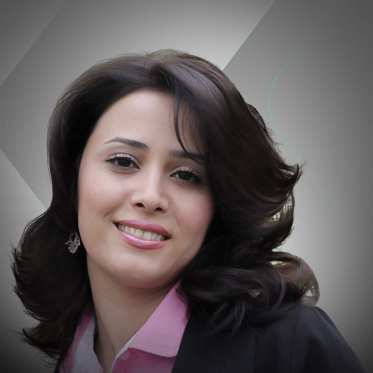Visible and invisible violence against women

From 25 November through 10 December, Human Rights Day, is the United Nations-sponsored 16 days of activism against gender-based violence. At this time, conversations tend to revolve around Boko Haram’s kidnapping of school girls, or the Islamic State’s treatment of Yezidi women as “spoils of war” where they were reduced to sex slaves—no longer humans.
Thinking about less extreme yet still relevant cases, many protests against “honour” killings are staged in major cities around the world. Though it is hard to fathom, globally an average 5,000 honour killings happen per year, according to the UN.
But where do such extreme cases against women begin? Can they be prevented at an earlier stage?
Violence against women can take on much more subtle forms than killing or kidnapping. It starts with an idea, the thought that women are inferior to men, that they are less than human, that they do not exist as independent individuals but they are "created" mainly to please men. In Kurdish and many other cultures women are commonly spoken about or referred to by the roles they play in relation to a man: somebody’s mother, daughter or wife.
Long before we can physically take a human being's life, we start to kill them in our minds. The “male gaze” and the perception that removes the human face from a woman and denigrates her to a mere object of desire can be a seed for future physical violence. In most cultures, including Kurdish culture, men are rarely held accountable for their gazes and instead women are often pressured to dress conservatively. Women are blamed and the men are not taught to change their views.
Another common unjust perception of women in Kurdish society is that a woman’s main duties are to serve men, cook, clean, and raise children. In such a society, active participation of women in most roles are discouraged--except, of course, in armed resistance and in promoting nationalistic views. Managing a company, playing sports, or expressing individuality in any form is thus inherently invading men’s territory.
How women are seen, literally and figuratively, is also reflected in language. Everyday language gives an inferior position to women. In Kurdish, for example, a woman does not choose a spouse, rather she “ba sho adre”--is someone’s daughter who is given to a man. By implication, her father is the decision maker, the unstated subject in the expression, the one who gives the daughter to another man.
The very concepts of “gheirat, sharaf, or namoos” roughly translated to “honour” in English requires men to exert full control over a woman’s body who is related to them: their wife, sisters, mother, cousins and sometimes even women in the neighbourhood.
These concepts are double-edged swords that not only subjugate women but also put a significant amount of pressure on men to prove their control. A man who cannot safeguard his female family member’s “chastity” (another problematic term) will find his masculine identity threatened.
Verbal violence also gets promoted in the sexist jokes that present a woman as a dullard, incapable of thinking. These jokes produce and reproduce demeaning images of women, and a seemingly harmless joke can penetrate a society’s conscious and subconscious mind and enhance unfair views of women.
Hence, a lot of invisible violence against women is repeated daily in the way women are seen and referred to in everyday language.
But a society in which subtle emotional and verbal abuses go unnoticed is an unhealthy society that will produce an unhealthy next generation, creating a vicious circle. Children who witness spousal violence are also victims of violence.
According to the UNISEF, an estimated 375 million children around the world are exposed to domestic violence. In the United States alone, 95% of the domestic violence cases involve female victims of male partners. Psychologists believe that children who have to bear witness to their parent’s harsh treatments of each other are 80 percent more likely to become victims of violence or turn into victimizers in the future.
It is no surprise then that the 2015 World Economic Forum global gender gap report shows Middle Eastern countries are some of the worst countries for women to live in. Syria, Iran, Yemen, Pakistan, Lebanon, and Saudi Arabia have some of the lowest rankings among the 145 countries.
UN reports that globally “a staggering one in three women have experienced physical or sexual violence in their lifetime—a pandemic of global proportions. Unlike an illness, however, perpetrators and even entire societies choose to commit violence—and can choose to stop. Violence is not inevitable. It can be prevented.”
Thus, to prevent physical violence, Kurdish society needs to be better educated about verbal and psychological abuses that tend to be less visible than broken bones or bruised eyes. A society in which making fun of a woman’s appearance is commonplace is a society that paves the way for unfortunate physical violence.
